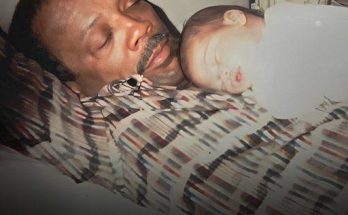In a recent rally in Las Vegas, Donald Trump’s behavior on stage has sparked significant concern among viewers, with many noting the visible discomfort of his audience. One attendee, captured shifting nervously throughout the event, epitomized the growing unease as Trump rambled and ranted. The reactions of those in attendance reflected an unsettling atmosphere, as even family members were texting about Trump’s alarming outbursts.

Trump’s speech, characterized by a mix of anger and confusion, left many wondering about his mental state. His closing remarks, which included a repetitive mantra of making America “powerful,” “wealthy,” “healthy,” and “strong” again, sounded almost childlike. This repetition, devoid of substance, highlighted a man struggling to maintain his political persona amidst growing pressure. Observers noted that he seemed to be aware of his faltering image, particularly following a recent debate where his performance was widely criticized.
One of the more bizarre moments involved Trump’s claims about Vice President Kamala Harris supposedly wanting to reinstate the draft. This assertion was not only unfounded but also indicative of his broader strategy to instill fear among his supporters. He painted Harris as a villainous figure, suggesting she would send children to war, a narrative that lacks any basis in reality. Such hyperbolic statements reveal Trump’s desperation to rally his base by exploiting their fears rather than addressing substantive issues.
Trump’s disdain for the word “joy,” which he claimed Harris overuses, further exemplified his spiteful demeanor. His refusal to use the term seemed petty, underscoring his inability to engage positively with his opponents. Instead of fostering a sense of hope or opportunity, Trump resorted to anger and resentment, which are hallmarks of his recent speeches.
The former president also made alarming comments about construction and urban development, suggesting that modern buildings should have fewer windows, likening them to “bunkers.” This odd analogy raised eyebrows and prompted laughter from the audience, but it also illustrated a disconnect between Trump and the realities of urban planning. His fixation on such trivial matters only served to distract from the pressing issues facing Americans today.
As Trump continued his tirade, he made incendiary remarks about job losses among Black workers, attributing these to migrant labor. This statement not only misrepresented the current economic landscape—where Black unemployment is at historic lows—but also perpetuated harmful stereotypes. Trump’s rhetoric often seeks to divide rather than unite, using scapegoating as a political tool.
Additionally, Trump criticized President Biden’s inability to pass student debt relief, failing to acknowledge that the Supreme Court’s ruling was a significant barrier. His claims that Biden and Harris were “all talk and no action” ignored the complexities of legislative processes and the realities of the current political climate.
Throughout the rally, the discomfort of the audience became increasingly apparent. Many attendees were seen shifting in their seats, avoiding eye contact with Trump, and even leaving the venue. This visible tension suggested that even his most ardent supporters were beginning to question his direction and demeanor.
In one particularly troubling moment, Trump lashed out against Haitian migrants, claiming they were “taking over” Springfield, Ohio. This statement was factually incorrect, as many of these individuals are legally residing in the U.S. By spreading misinformation and fear, Trump aimed to create a narrative of crisis where none existed. This tactic of sowing distrust among communities is a familiar strategy for Trump, who has often used fear-mongering to galvanize his base.
In conclusion, Trump’s recent rally in Las Vegas revealed a man increasingly unhinged and disconnected from reality. His erratic behavior, coupled with troubling statements, raised concerns not only about his mental state but also about the direction of his campaign. As his supporters visibly shifted in their seats, it became clear that Trump’s once charismatic presence is now overshadowed by anger and desperation. The question remains: can he regain the support he once commanded, or is this the beginning of a decline marked by fear and division?



